Untitled Document
Israeli dual/multi-use WMD (left) and badly burnt body
of young Lebanese girl with telltale signs of white phosphorous attack.
U.S. military intelligence sources have told WMR that the artillery shell shown
below being used by an Israel Defense Force member in Lebanon, is a type of
dual and multi-use weapon the neocons falsely accused Saddam Hussein of possessing.
Although the canister artillery shell is marketed as an anti-land mine fuel-air
bomb, its payload can also include the chemicals used in thermobaric bombs,
white phosphorous weapons, and chemical weapons. Thermobaric bombs contain polymer-bonded
explosives or solid fuel-air explosives in their payloads. Thermobarics use
a fuse munition unit (FMU) such as that seen on the nose of the Israeli artillery
shell. The shell penetrates buildings, underground shelters, or tunnels, creating
such a blast pressure that all the oxygen is sucked out from the spaces and
the lungs of anyone who happens to be in proximity. Israel's use of such "vacuum"
weapons has been reported from across Lebanon.
The artillery shell below, with its FMU penetrator, can also be used to deliver
chemical weapons, the use of which is also being reported from southern Lebanon.
In addition, it can deliver white phosphorous, a substance that literally melts
through skin but leaves clothing relatively intact. In Fallujah and elsewhere
in Iraq, U.S. forces have used white phosphorous on civilians, leaving grotesque
corpses as a psychological warfare reminder to the civilian population to surrender
or evacuate an area. The photo from Sidon of a burnt and badly disfigured young
Lebanese girl is a telltale sign of white phosphorous use by the Israelis. Similar
photos from Fallujah were shown to this editor by a top investigative reporter
for Italy's RAI television network.
U.S. military intelligence experts believe the ease at which the Israeli soldier
is handling the artillery shell is an indication that the payload contains light-weight
gas and not a fuel-air mixture or thermobaric bomb components. WMR continues
to receive reports from Lebanon of depleted uranium shells being used by the
Israelis. The New York Times today is reporting that the U.S. is stepping up
its delivery of "precision-guided" munitions to Israel (see article
below on Bush administration pre-planning for the Israeli invasions of Lebanon
and Gaza).
__________________________
CAN YOU HELP US , PLEASE!
from
uruknet.info
Do you know what kind of weapons causes this damage?
As-Safir Newspaper
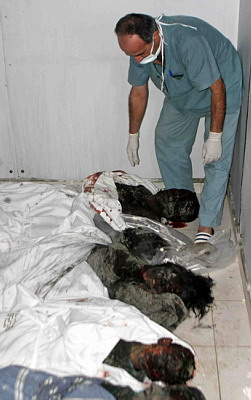
Israeli aggression on Lebanon
July 2006
Do you know what kind of weapons causes this damage?
Beirut
July 21st, 2006
I left the office early last night ; at midnight.
There was only one devastating picture yesterday : that of two people who were
killed in air strikes on Akkar,(the poorer area) in the north, late Wednesday
night.
Both corps were black, both were dismembered , both were "weird".
I don't think it matters anymore to try to prove that Israel is using unconventional
, forbidden weapons .. that would only prove that it should have used "allowed"
weapons. Who cares, people are dying anyway. And whatever weapons are being
used , the pollution they're creating will kill the survivors from cancer later.
The rest of the pictures were less devastating, conventional : demolished houses,
wiped out villages and towns, more refugees , some of them starving, lovely
babes on board of US marines ships and colored people from poor countries lining
up in front of embassies hoping they will get them out of this hell.
The really devastating pictures will came later , much later, some day when
all this will stop maybe we'll be able to visit the ruins of whole villages.
But even then it might be too late : how long does it take corps buried under
rubbles to disintegrate and vanish ?
Anyway , so I left the office early and went home with my friend who's staying
with us because his house is in the southern suburb of Beirut. I was a bit worried
because my brother in law , Khalil's brother, was there too and I was wondering
if I'd be able to manage space for everybody to sleep comfortably.
Raed, my brother in law, and his eight-month pregnant wife , had left Jebshit
in the south yesterday morning. They reached Beirut by 5:00 pm.
They had crossed a bridge in Habbouche who'd been targeted only once . It was
destroyed but cars were still able to find a way through. Half an hour after
Raed had crossed the bridge, it was bombed again and completely demolished this
time (sounds like an Indian movie, right?). Of course Raed knew nothing about
that , he trying to make out to Saida, then up to Baakline in the Shouf then
way down back to Beirut.
When I got home , I asked if they had dinner. I was a bit ashamed because my
fridge is empty. I hadn't had time lately to buy grocery and I'm "heavily"
relying on milk to feed Kinda, my daughter. "Dinner ?" Raed asked
, "we had 9 shawarma sandwiches, Rana (his wife) and I. Today was the first
time we eat in 3 days".
He tells stories about Jebshit. Sad ones. No electricity , no water, no roads,
no food, no newspapers. Some villages even run out of batteries, so they can't
even listen to the news on the radio. Funny, isn't it, that in Beirut we know
more about what's going on than the people concerned. Raed only knew they blew
the Habbouche bridge when he listened to the news after he reached Beirut.
I have to admit to all of you that I have very mixed, weird, sick feelings
about all this.
The first three or four days were very strange. I was in Beirut , sitting in
an air conditioned office, watching the devastation of the South and the southern
suburb. It felt like when you watch news and pictures from Palestine and Iraq.
You feel frustrated and concerned, but you know there's not much you can do
for them, for mere geographical reasons, at least that's the excuse one uses
to comfort one's self. But "this" was happening a few kilometers away
and I'd still be sitting here watching.
The other weird feeling was related to the first one: I felt that I was paying
my dues. The guilt feeling I've always had toward Palestine, and later towards
Iraq, has diminished a little bit. I felt like hugging Palestine and Iraq and
screaming to them "We're with you, like you: left alone, suffering and
part of your cause, a great one."
Sometimes I just flip and cry. Cry because I'm so helpless and angry. And most
of the time I turn on my "automatic engine on". I wake up at six ,
come to the office, report hideous stories , feel nothing about them , do my
job : double check , choose "fantastic" headlines , pick up the "best"
pictures, try to be as professional as one can be. I do that for 12 to 14 hours.
I'd then go home, pick up my daughter from my mother's house , and go to bed
at one. The Israelis love to start their raids at ten past one, sometimes at
five past one. That's when I'm in bed. Every night, when they start, I rush
out to the balcony to see where the smoke comes from. I live on the twelfth
floor. Every night , when I go out , I see the moon , my lovely moon , shyly
hiding behind the clouds caused by the fires that are surrounding my Beirut.
This morning , I stayed home till 12:00. I played with Kinda. My poor little
baby. She doesn't understand what's going on. She keeps asking about her cousins.
She looks at their pictures and keeps repeating their names; as if it was an
exercise not to forget them. I tell her they're in the mountains, and that we
can't go there. When they call us, she refuses to talk to them. She thinks they
abounded her.
The first time she heard the bombing, she rushed to my arms asking me if this
was fireworks . I said " no , this is boum boum , ha ha ha " and started
laughing. So now, every time she hears the bombing she starts singing "boum
boum " and she laughs.
I left her at noon. She was sleepy, and wouldn't go to bed. It took a few minutes
to realize the reason : she wanted to fall asleep in my arms. Before July the
12th, I would not move at her bed time. I'd put her on my lap , sing to her
until she sleeps. For 10 days now, she's been sleeping in the stroller at my
mother's house: only to guaranty that I will come pick her up when I finish
working.
Two last notes: I feel ashamed talking about my daughter while other people's
kids were either killed or lack of food and shelter. But I feel so guilty towards
her.
Second : to all the Israelis who have been sending their comments on what I
write , I say this : I agree with you , we are savages , blood lovers, we don't
have feelings, and we actually enjoy looking at the pictures of victims. Actually
, each time we see one , we party and dance. And in my writings, I'm only pretending
to have feelings , and being pathetically sentimental only to bluff. Here, I'm
admitting it. And to all my friends in the west : don't believe anything I say
, cause I'm only viciously using you and trying to turn you into sympathizers
of fundamental terrorism.
Hanady
______________________
Beirut
July 19, 2006
The attached pictures are hideously gruesome, but you have to look at them
. Help me find out what kind of weapons cause this kind of dismemberment and
mutation.
What kind of weapons cause this kind of damage? Do you know? Could you find
out?
None of this is confirmed, or could be here and now. However, there are growing
doubts that Israel might be using internationally forbidden weapons in its current
aggression against Lebanon. News from "Southern Medical Center", a
hospital in Saida( in South Lebanon) are not good. Dr. Bashir Sham, member of
"French Association of Cardiovascular Surgeons", explains that the
way the corps look when they reach the hospital, especially those of the air
strikes in Doueir and Rmayleih, is very abnormal." One might think they
were burnt , but their colour is dark , they're inflated, and they have a terrible
smell" All this , and the hair is not burnt nor do the bodies bleed.
Eight of the victims of an air strike on Rmayleih bridge, near Saida, on the
15th of July, were transferred to Sham's hospital.
Sham says that only chemical poisonous substances "lead to instant death
without bleeding".
And what indicates the power of these substances, is the high and unusual of
number of dead victimes, compared to the number of injuries.
Sham thinks that whatever "abnormal " substance causing these features
might penetrate through the skin, or another explanation would be that the missiles
contained toxic gas that stopped the proper functioning of the nervous system,
and led to blood clotting.
These toxic materials cause immediate death, within two to thirty minutes,
according to Sham, who admits that these doubts can't be proven, not even by
an autopsy.
The director of the same medical center, Ali Mansour, says that due to the
strong smell of the corps, he couldn't breath properly for at least 12 hours
after the corps were handled.
He explains that the center received eight bodies from Rmeileh last Monday,
and none of them was bleeding.
Mansour tells us the hospital wrote to both the commissioner of the European
Union for Foreign Affaires Javier Solana, and the United Nations Secretary general
Kofi Anan. He said that dr Sham will communicate his doubts to the Doctors Order
in Lebanon.
CAN YOU HELP US , PLEASE!
Hanady
___________________
Beirut

A body killed by a burning object lies in a Beirut suburb July 17- Reuters
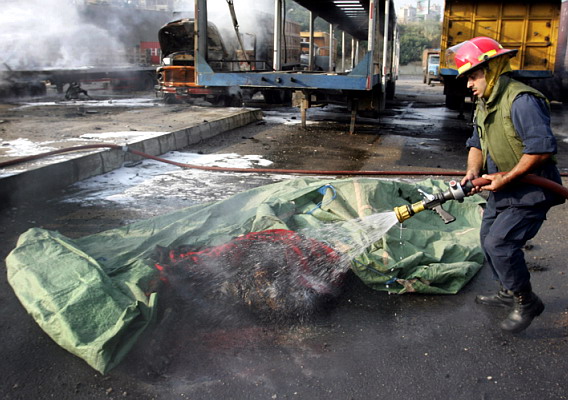
A Lebanese firefighter extinguishes the charred body of a Lebanese truck driver who was killed when Israeli planes attacked the port in Beirut July 17 - AP
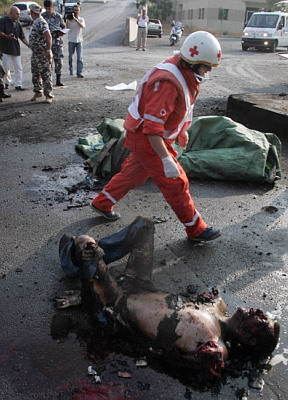
A member of the Lebanese Red Cross walks past a badly burnt body in Beirut's port, which was targeted by Israeli warplanes, July 17 - Reuters

A member of the Lebanese Red Cross walks past a badly burnt body in Beirut's port, which was targeted by Israeli warplanes
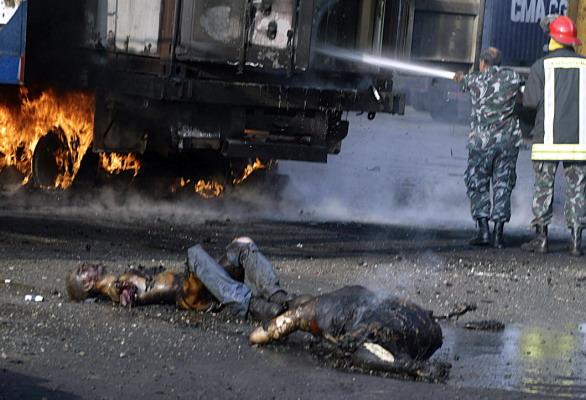
A member of the Lebanese Red Cross walks past a badly burnt body in Beirut's port, which was targeted by Israeli warplanes-2.
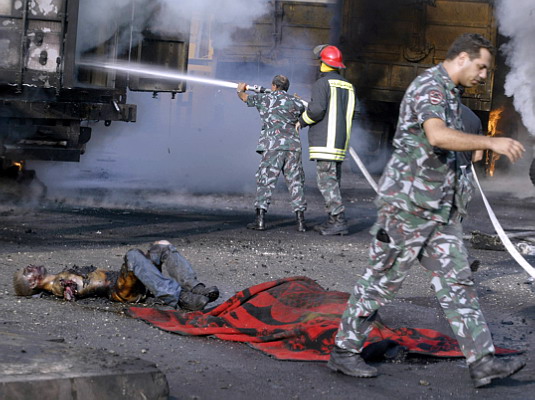
Lebanese firefighters try to extinguish the fire while the dismembered and burnt corpses of two Lebanese civilians killed in an Israeli air raid lie on the ground at the port in Beirut
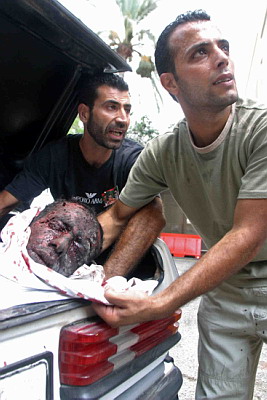
Lebanese men remove a recovered body of a man from the back of a vehicle in Beirut July 17- Reuters.jpg
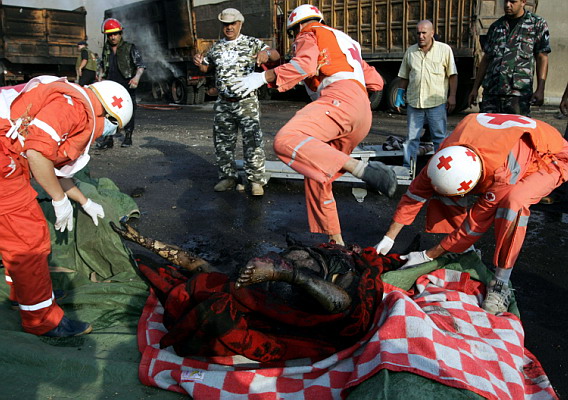
Lebanese Red Cross members remove the dismembered and burnt corpses of two Lebanese civilians killed in an Israeli air raid at the port in Beirut 17 July

Lebanese Red Cross members remove the dismembered and burnt corpses of two Lebanese civilians killed in an Israeli air raid at the port in Beirut.
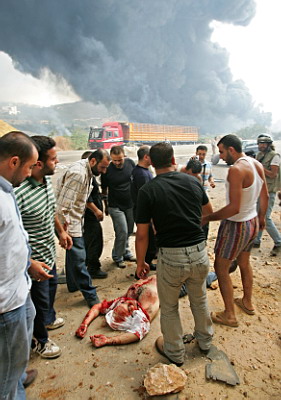
look at his right eye - Lebanese citizens gather around a man who was
killed by shrapnel from an explosion in Kfarshima, near Beirut, Lebanon, Monday,
July 17 -AP
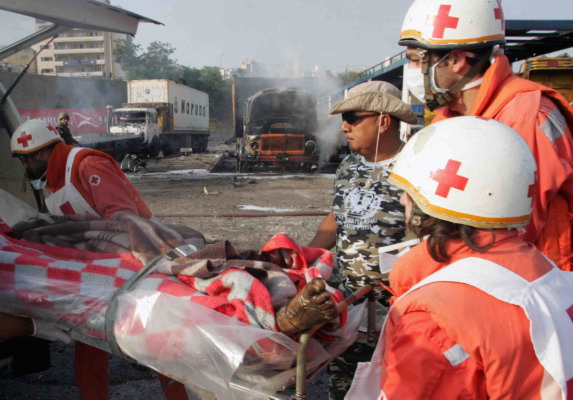
look at the foot - beirut prot july 17 - Reuters
________________________________
Sidon

A Lebanese medic carries the body of a young girl, in a refrigerated truck used as a makeshift morgue, in the port city of Sidon, Lebanon, Monday, July 17 - AP
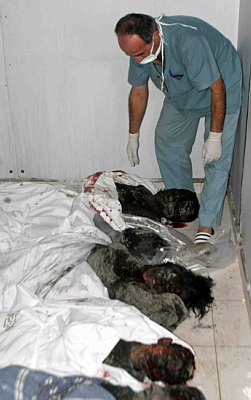
A Medic inspects burned bodies of Lebanese civilians who were attacked
as they passed by a bridge that was targeted in north Saida, southern Lebanon,
July 17 - Reuters
___________________________
Tyr
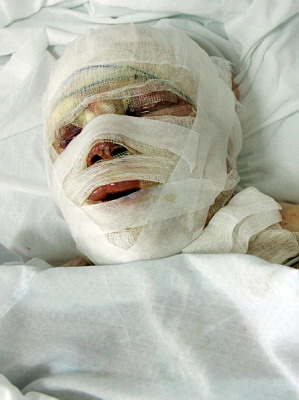
A badly injured Lebanese civilian is seen at a hospital following Israeli air strikes on a house in the southern city of Tyre, 17 July - AFP

A Lebanese rescue worker gathers the remains of a woman from the rubble of residential buildings hit by the Israeli bombardement in the southern Lebanese city of Tyre, 18 July - AFP
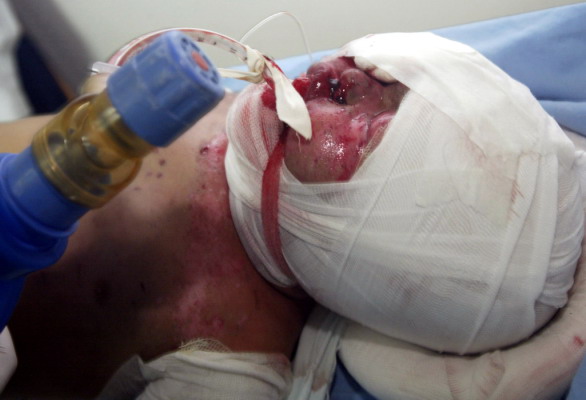
An 18-month-old Lebanese child lies dead 17 July on a hospital bed in Saida eight hours after being injured yesterday in an Israeli air attack in Tyre - AFP
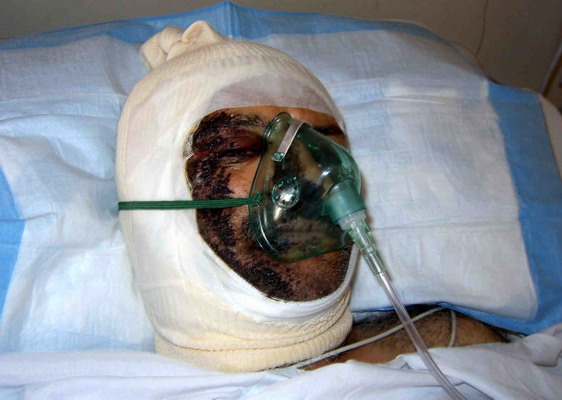
Lebanese man that was injured and burned by Israeli attacks on Tyre, lies in a hospital in south Lebanon July 15 - Reuters
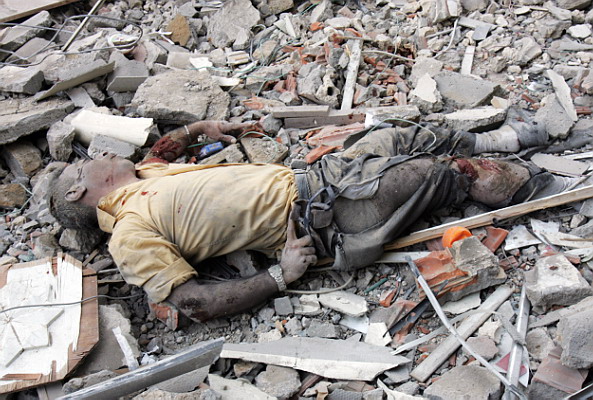
The corpse of a dead man lies admist the rubble from devastating Israeli air strikes in Tyre, south Lebanon, 16 July - AFP
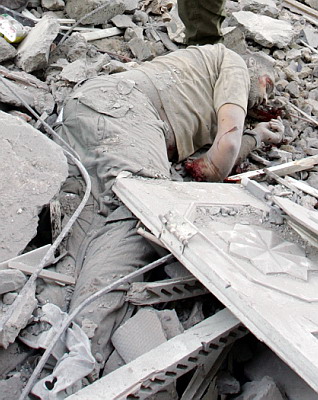
The corpse of a Lebanese civilian lies amidst the rubble following a devastating Israeli air strike in Tyre, south Lebanon, 16 July a
___________________________
Rmayleh
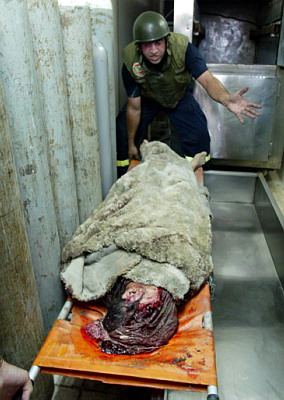
A civil defense member transports the corpse of a Lebanese civilian killed in an Israeli air raid that targeted the Rmeyleh bridge near Saida 17 July afp.
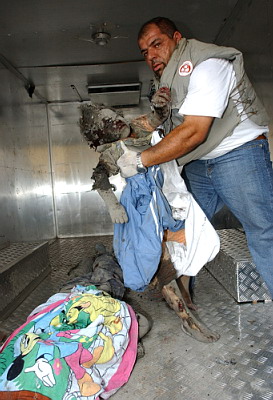
A Lebanese medic carries the body of a young girl, in a refrigerated truck used as a makeshift morgue, as another body lies covered, in the port city of Sidon, Lebanon, Monday, July 17
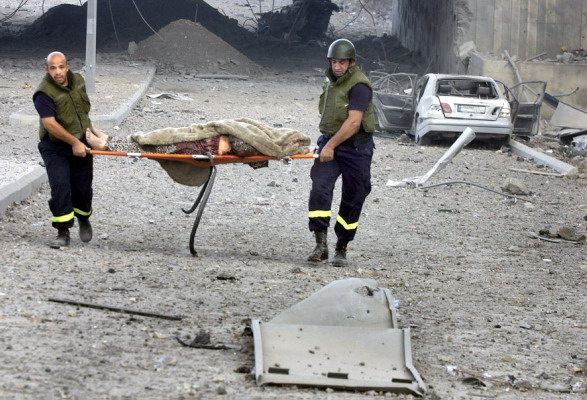
Civil defence rescuers carry the body of a woman away from a civilian car that was struck by an Israeli warplane missile- rmayleih juy 17 - AP
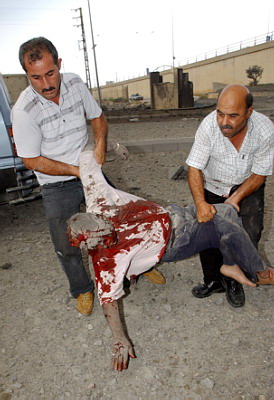
Drivers carry away Lebanese Ali Wahid after he was seriously wounded in his car, while he was driving past a bridge when was struck by an Israeli warplane missile- rmayleh july 17 ap.

Lebanese Red Cross members cover the burnt corpse of a Lebanese civilian killed in an Israeli air raid that targeted the Rmeyleh bridge in Saida 17 July AFP.
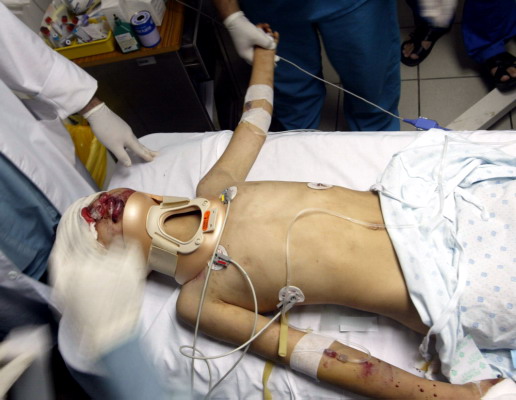
look at his face - A 7-year-old Lebanese boy fights for his life on a hospital bed in Saida 17 July 2006 after being injured in an Israeli air raid - AFP
______________________________
Marwahin
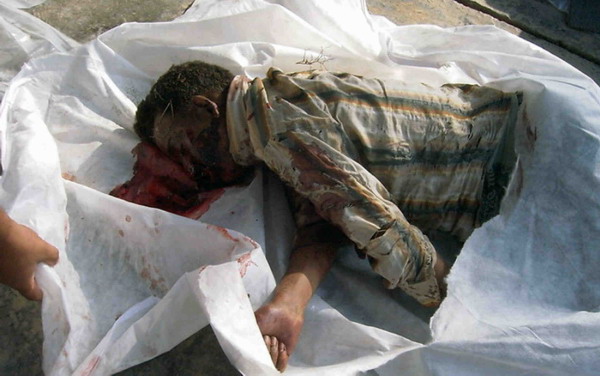
A badly charred and mutilated body lies on the ground after an Israeli missile hit a van carrying passengers on a road in southern Lebanon, July 15, - Reuters

A body of a man from the southern village of Marwahin, who was killed along with 17 others near the village of Shamaa
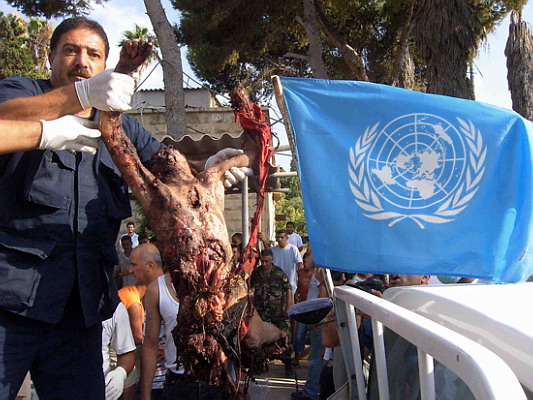
A United Nations medic holds a body that was badly charred and destroyed after an Israeli missile hit a van carrying passengers on a road in southern Lebanon, July 15 - Reuters
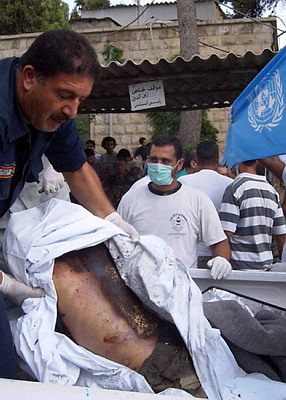
KILLED ON THE SAME ROAD IN THE SOUTH JULY 15 - REUTERS
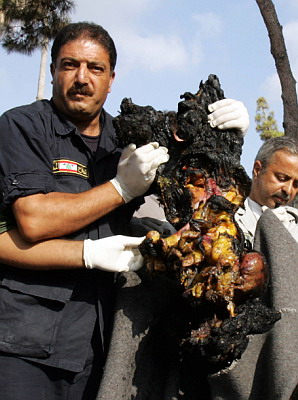
Lebanese civil defence member carries the corpse of a young girl from the southern village of Marwahin
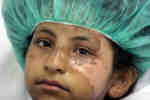
MARWA Marwa Abdallah, who survived Saturday's attack on a van in Tyre where twenty people where killed IN HOSPITAL JULY 16 - REUTERS
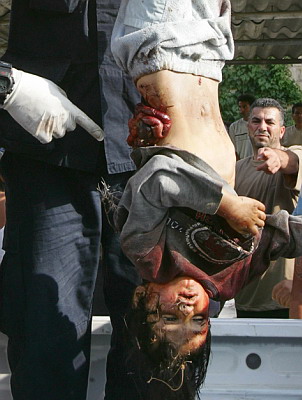
MARWAHIN (SOUTH ) JULY 15 - AFP
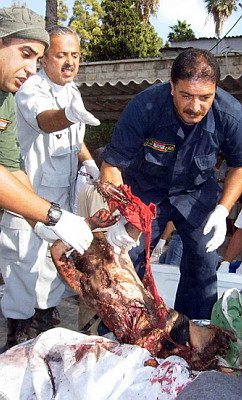
MARWAHIN (SOUTH ) JULY 15 - REUTERS
__________________________
Zebdine
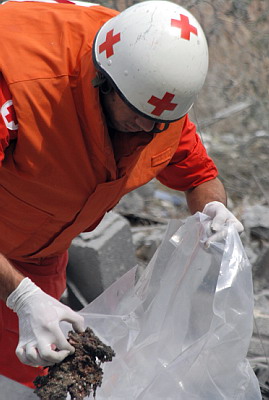
A Lebanese Red Cross staff collects human remains following an Israeli
air raid on Zebdine village (south )JULY 16 AFP
________________________
Teir Harfa
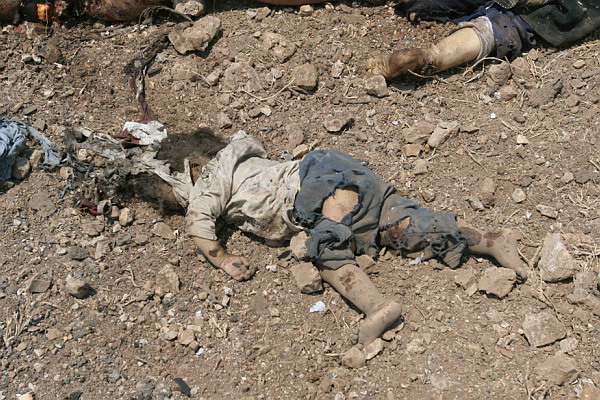
TEIR HAFRA 1 (SOUTH) JULY 15 - AP
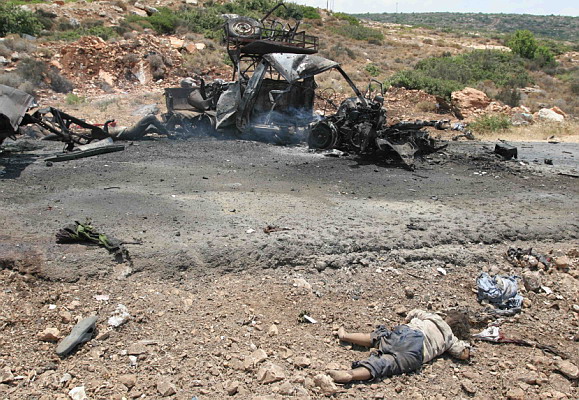
TEIR HAFRA 2 SOUTH) JULY 15 - AP
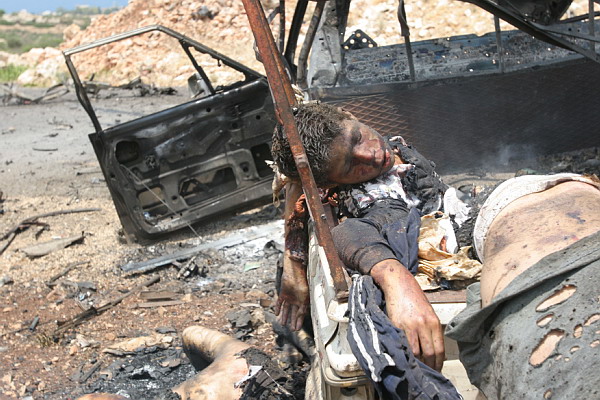
TEIR HAFRA 3(SOUTH) JULY 15 - AP
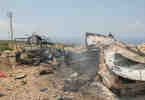
TEIR HAFRA 4 (SOUTH) JULY 15 - AP
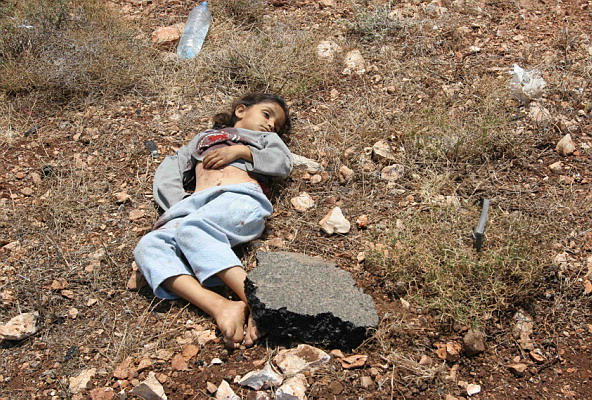
TEIR HAFRA 5 (SOUTH ) JULY 15 - AP
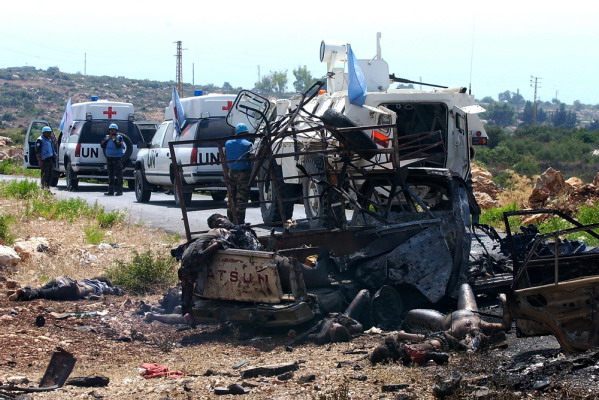
TEIR HAFRA 6 (SOUTH ) JULY 15 AP
____________________
Bekaa
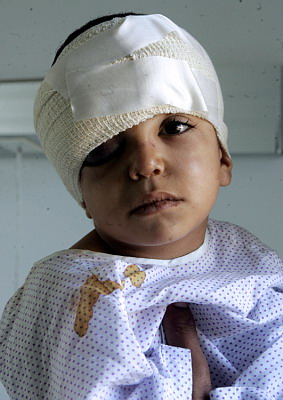
look at the eye- Issam Mostafa, a 3-year-old Lebanese boy, rests at a hospital in Shtora in the Bekaa valley 17 July afp.

